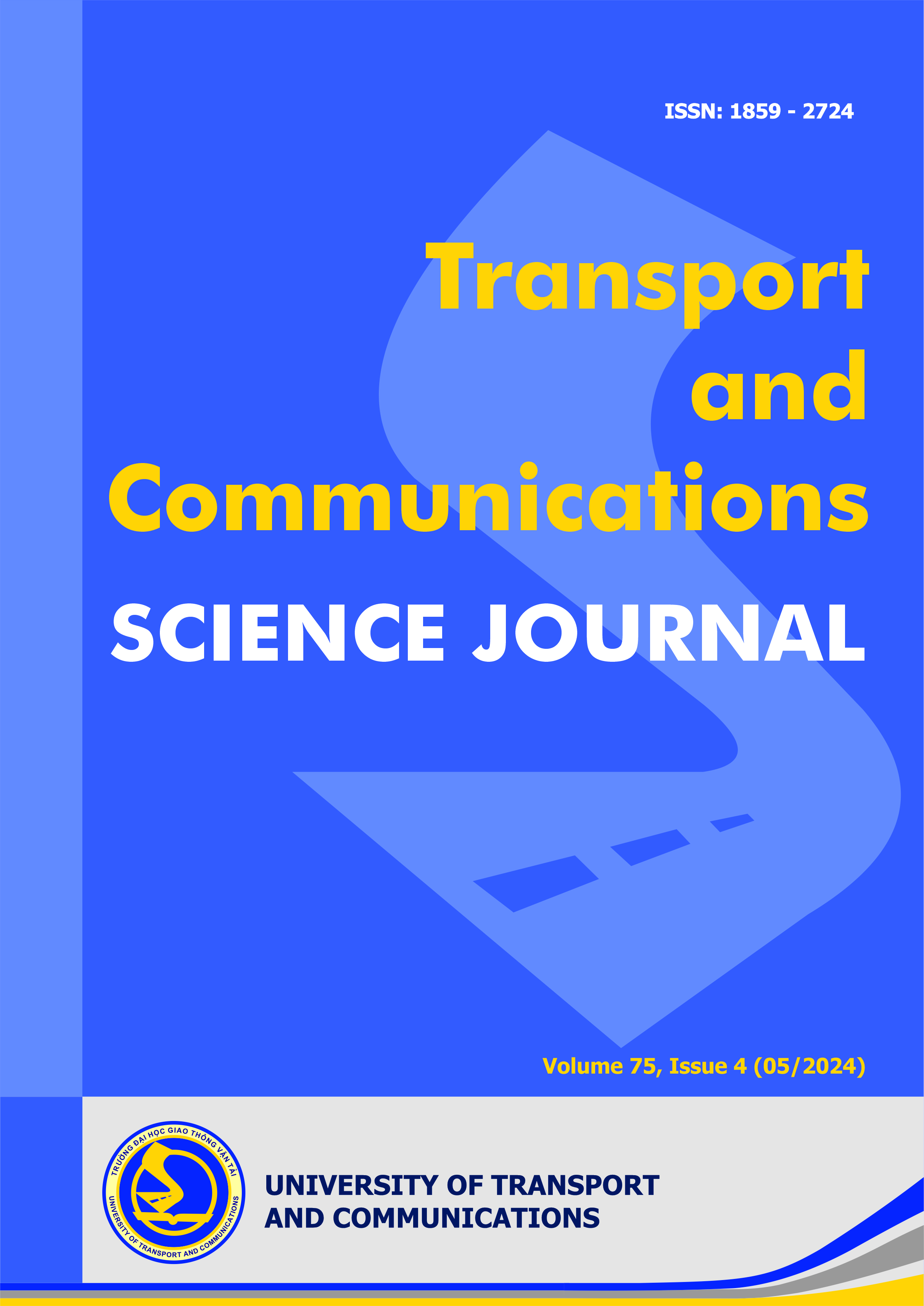Validation of stamper device to measure international roughness index IRI
Email:
ptthien@utc.edu.vn
Từ khóa:
International Roughness Index (IRI), STAMPER, roughness index, quality of road surface
Tóm tắt
Measuring International Roughness Index (IRI) is one of the tasks in the process of checking, monitoring and evaluating road surface quality. In Vietnam, the types of IRI measuring devices are still limited. There are specialized devices with high accuracy and speed, but the cost is high. Therefore, they are not commonly used for regular monitoring. To measure IRI regularly and conveniently, it is necessary to use device that is easy to use, convenient, with high speed, high accuracy, but at a reasonable cost. The STAMPER (System with Two Accelerometers for Measuring Profile, Enabling Real-time data collection) from Taisei Rotec company (Japan) has been used to measure on different types of roads in Hanoi: city road, expressway and national highway. Data will be collected many times, with speed ranges and by many types of vehicles. The results show that STAMPER can measure IRI quickly and stably. It is easy to install on many type of vehicles and gives accurate, reliable measurement resultsTài liệu tham khảo
[1]. M. W. Sayers, T. D. Gillespie, C. A. V. Queiroz, The International Road Roughness Experiment: A Basis for Establishing a Standard Scale for Road Roughness Measurements, Transportation Research Record 1084 (1986), pp 76-85.
[2]. M. W. Sayers, T. D. Gillespie, W. D. O. Paterson, Guidelines for conducting and calibrating road roughness measurements. in World Bank technical paper, no. 46. Washington, D.C., U.S.A: World Bank, 1986.
[3]. N. V. Hung, N. V. Du, N. S. Dong, Evaluate the impact of asphalt concrete pavement roughness on vehicle safety, Transport Journal, 1 (2017) 86-89. (In Vietnamese).
[4]. N. H. Long, Research to evaluate road surface quality during the exploitation phase through the international roughness index IRI from the viewpoint of reliability theory, Transport Journal, 12 (2017). (In Vietnamese).
[5]. K. Hirakawa, P. H. Kien, M. Shimazaki, The Applicability of STAMPER in Vietnam for Sustainable Pavement Management System, 2018.
[6]. N. Abulizi, A. Kawamura, K. Tomiyama, and S. Fujita, Measuring and evaluating of road roughness conditions with a compact road profiler and ArcGIS, Journal of Traffic and Transportation Engineering (English Edition), v3 (2016) pp.398-411. https://doi.org/10.1016/j.jtte.2016.09.004
[7]. K. Tomiyama, A. Kawamura et al, A mobile profilometer for road surface monitoring by use of accelerometers, 2012.
[8]. N. Abulizi, Efficient Road Roughness Monitoring using Mobile Profiler and GIS in Establishing Pavement Management System, KITAMI Institute of Technology, 2017.
[9]. P. T. T. Hien, P. H. Kien, N. T. H. Hanh, Measuring International Roughness Index IRI using STAMPER device, The Builder Journal, 367 & 368 (2022) 52-57. (In Vietnamese).
[10]. Vietnam standard TCVN 8865:2011, Method for measuring and assessment roughness by International Roughness Index (IRI). (In Vietnamese).
[11]. P. T. T. Hien, P. H. Kien, N. T. H. Hanh, Measuring and analyzing roughness index using STAMPER device on roads in Vietnam, Transport Journal, 1 & 2 (2023) 71-74. (In Vietnamese).
[2]. M. W. Sayers, T. D. Gillespie, W. D. O. Paterson, Guidelines for conducting and calibrating road roughness measurements. in World Bank technical paper, no. 46. Washington, D.C., U.S.A: World Bank, 1986.
[3]. N. V. Hung, N. V. Du, N. S. Dong, Evaluate the impact of asphalt concrete pavement roughness on vehicle safety, Transport Journal, 1 (2017) 86-89. (In Vietnamese).
[4]. N. H. Long, Research to evaluate road surface quality during the exploitation phase through the international roughness index IRI from the viewpoint of reliability theory, Transport Journal, 12 (2017). (In Vietnamese).
[5]. K. Hirakawa, P. H. Kien, M. Shimazaki, The Applicability of STAMPER in Vietnam for Sustainable Pavement Management System, 2018.
[6]. N. Abulizi, A. Kawamura, K. Tomiyama, and S. Fujita, Measuring and evaluating of road roughness conditions with a compact road profiler and ArcGIS, Journal of Traffic and Transportation Engineering (English Edition), v3 (2016) pp.398-411. https://doi.org/10.1016/j.jtte.2016.09.004
[7]. K. Tomiyama, A. Kawamura et al, A mobile profilometer for road surface monitoring by use of accelerometers, 2012.
[8]. N. Abulizi, Efficient Road Roughness Monitoring using Mobile Profiler and GIS in Establishing Pavement Management System, KITAMI Institute of Technology, 2017.
[9]. P. T. T. Hien, P. H. Kien, N. T. H. Hanh, Measuring International Roughness Index IRI using STAMPER device, The Builder Journal, 367 & 368 (2022) 52-57. (In Vietnamese).
[10]. Vietnam standard TCVN 8865:2011, Method for measuring and assessment roughness by International Roughness Index (IRI). (In Vietnamese).
[11]. P. T. T. Hien, P. H. Kien, N. T. H. Hanh, Measuring and analyzing roughness index using STAMPER device on roads in Vietnam, Transport Journal, 1 & 2 (2023) 71-74. (In Vietnamese).
Tải xuống
Chưa có dữ liệu thống kê

Nhận bài
23/03/2024
Nhận bài sửa
07/05/2024
Chấp nhận đăng
09/05/2024
Xuất bản
15/05/2024
Chuyên mục
Công trình khoa học
Kiểu trích dẫn
Phan Thi Thu, H., Nguyen Thi Hong, H., & Pham Hoang, K. (1715706000). Validation of stamper device to measure international roughness index IRI. Tạp Chí Khoa Học Giao Thông Vận Tải, 75(4), 1567-1580. https://doi.org/10.47869/tcsj.75.4.8
Số lần xem tóm tắt
159
Số lần xem bài báo
111









